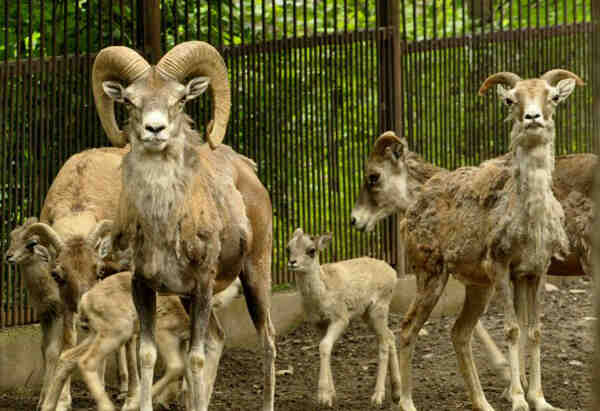Ovis collium
IUCN
LCBasic Information
Scientific classification
- name:Ovis collium
- Scientific Name:Ovis collium,Kasachstan Argali,Ovis ammon collium
- Outline:Ungulata
- Family:Artiodactyla Ruminantia Bovidae Caprinae Argali
Vital signs
- length:120-200cm
- Weight:65-185kg
- lifetime:10-15years
Feature
Formerly a subspecies of the argali
Distribution and Habitat
The Kazakh argali is found in Kazakhstan and the northern regions of Xinjiang, China. It is found in the Kazakh hills of central Kazakhstan and in the Tacheng region and the Sawur Mountains in the northeast of the country, bordering China.
In some areas, such as the Gobi Desert in southern Mongolia and the Karaganda region of Kazakhstan, the Kazakh argali lives in low-altitude, semi-arid areas. It usually avoids forested areas. It prefers to occupy open areas on gentle slopes. The biology of the Kazakh argali is significantly different from other argali populations that live in high mountains. It is common in large plains. The species hardly makes vertical migrations. Mountains in the Kazakh highlands are rarely higher than 300-400 meters above the surrounding plains, so the argali can easily move down to the bottom and up to the top every day. In the highlands of Kazakhstan, argali inhabit different landscapes, from high mountains to hilly plains.
Appearance
The Kazakh argali has a sturdy body, 1.2-2 meters long, 90-120 cm shoulder height, 65-185 kg weight, and shoulder height equal to or lower than hip height. It has a large head, thick neck, and short tail. The limbs are short and thick, and the front of the hoof is particularly steep, which is suitable for climbing between rocks. There are infraorbital glands and hoof glands. There is a pair of nipples located in the muzzle. The whole body is covered with coarse and short hair, but the neck is covered with longer hair. The body color is generally brown-gray or dirty gray, the face, shoulder blades, and front back are light gray-brown, the white part inside the ears is light yellow, and the chest, abdomen, inner and lower parts of the limbs and buttocks are dirty white. The hair on the front of the forelimbs is darker than that on other parts, and the color of the back of the tail is the same as that of the back of the body. The hair color of female sheep is darker than that of male shee
Details
Kazakh Argali, also known as Kasachstan Argali, was once a species of Argali.

Kazakh Argali was once considered a subspecies of Ovis ammon. The 2019 edition of the Convention on International Trade in Endangered Species of Wild Fauna and Flora (CITES) considers it an independent species, and China's National Key Protected Wildlife List released in 2021 also considers it an independent species. However, as of February 2021, the IUCN Red List of Threatened Species still lists it as one of the subspecies of argali.
After giving birth, females of Kazakh argali usually occupy steeper (cliff) terrain. Feeding on grasses, sedges, and some herbaceous plants and lichens, they often drink from open springs and rivers.
Kazakh argali estrus and mate in late autumn and early winter, and mating is polygamous; multiple matings can occur between many mates in a season. The dominant male will mate with many females. And wander during this period. Such opportunities may arise when the male's dominance changes or when a female leaves the group to join another group. The gestation period is 150-160 days, and the calves are born in May-June of the following year, with 1-3 calves per litter. The calves have a strong ability to adapt to the environment. They can stand up and feed as soon as their hair is dry after birth. They can move with the female argali a few hours later. In the first 4 months before weaning, the calves gain weight rapidly and increase in size. Muscle tone and coordination are further developed during nursing. They start to eat grass at around 1 month old, and the lactation period lasts for about half a year or more. They reach sexual maturity at 1-2 years old.
In the 2006-2007 survey, Kazakh argali were observed in much larger areas than they had been seen before, even on very small hills. During the 1990s and the first decade of the 21st century, the recovery of the Kazakh argali in its original habitat could be observed in the northern and central parts of its range, covering a total area of more than 140,000 square kilometers.
Listed in the IUCN Red List of Threatened Species 2020 ver3.1 - Near Threatened (NT).
Listed in Appendix I, II and III of the Convention on International Trade in Endangered Species of Wild Fauna and Flora (CITES) 2019 Edition Appendix II.
Listed in China's National Key Protected Wildlife List (February 5, 2021) Level II.
Protect wild animals and stop eating game.
Maintaining ecological balance is everyone's responsibility!








